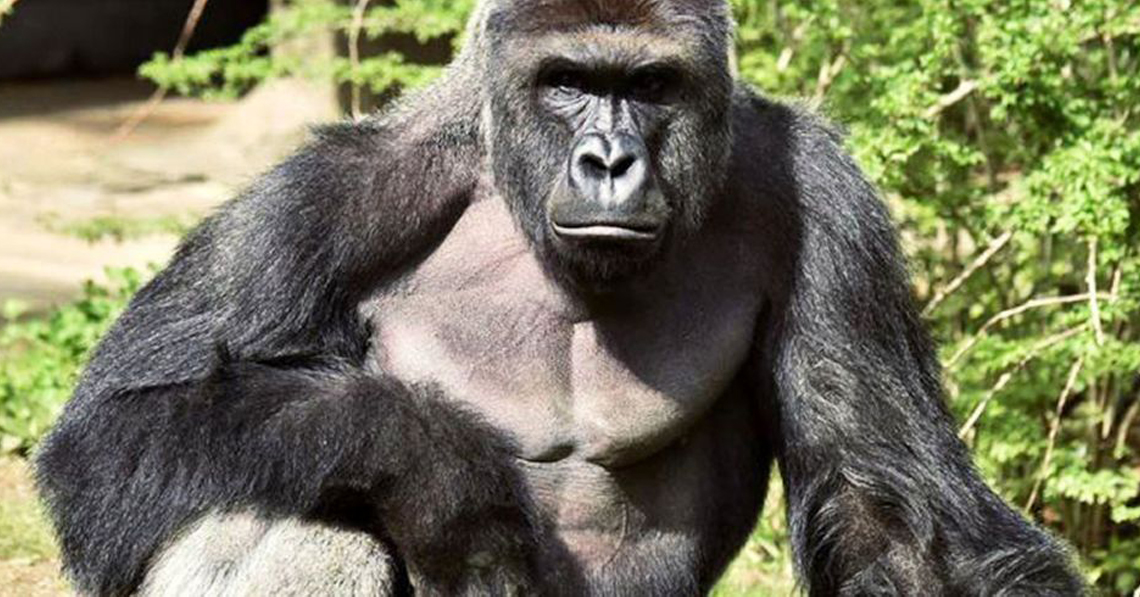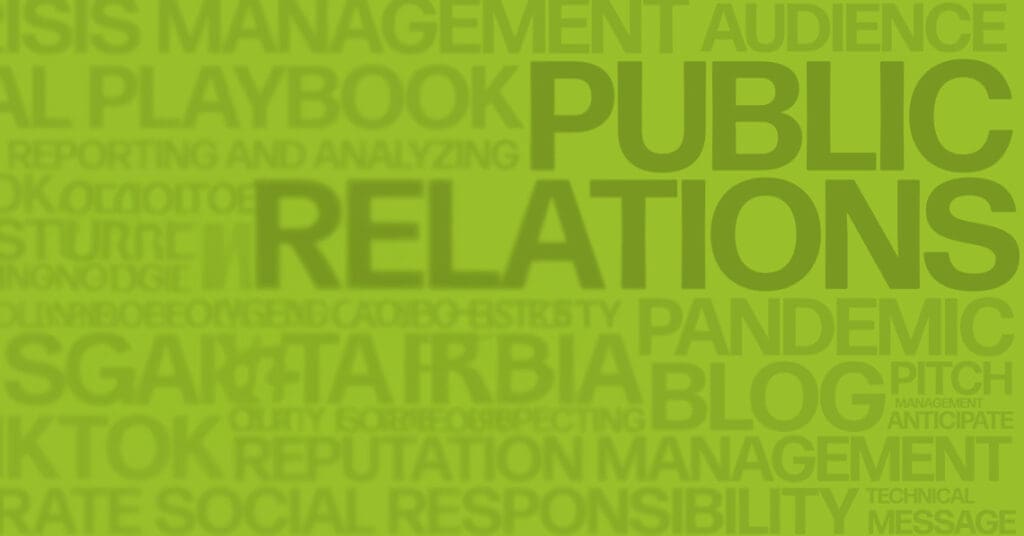
Long-Term Crisis Communication Planning: How to Think Beyond the Incident
News travels faster than ever, and social media amplifies every event. That means organizations like yours must be prepared for the unexpected. Enter crisis communication planning—the strategic foresight to navigate turbulent waters when unexpected storms hit. While your business may have reactive crisis plans in place, the true mark of preparedness lies in long-term planning.
If 2016 set out to be the year of controversy, it certainly hasn’t disappointed. Daily local, regional, national, and international headlines have not failed to give passionate social media users a plethora of causes to fuel the expression of their opinions. And much like the Energizer Bunny, they just keep going and going and going. One of the most embroiled controversies of the year came from a most unexpected place: a peaceful 143-year-old zoo in Cincinnati.
Crisis Communication Planning: Lessons Any Business or Organization Can Learn From the Cincinnati Zoo
- The Incident
- The Zoo’s Crisis Communication Strategy
- The Unplanned Long-Term Effects: A Social Media Firestorm
- Lessons Learned: Crisis Communications Planning for the Long-Term
- Get Expert Help With Your Crisis Communication Planning
The Incident
In case you’ve been hiding in a cave without internet access, here’s a recap of that ill-fated incident. On May 28, visitors to Gorilla World—the gorilla enclosure at the Cincinnati Zoo & Botanical Garden—watched in horror as a 3-year-old boy slipped over the zoo’s 3-foot public fence. Next, he made his way through 4 feet of bushes and fell 15 feet into a moat filled with little more than a foot of water. There, he attracted the attention of the zoo’s 450-pound silverback gorilla, Harambe.
Within minutes of the security breach, according to the Cincinnati Enquirer, zookeepers signaled for the gorillas in the enclosure to retreat inside. Two of the gorillas in the enclosure obliged. Harambe did not. Calls had been placed to 911, and dispatchers said first responders were already on their way to the zoo. According to the zoo, first responders arrived inside the enclosure and were soon joined by the zoo’s Dangerous Animal Response Team (DART). The situation was vetted, signaling a clear process for assessing dangers and risks. Then, a final decision was made. The child’s life was in imminent danger. Therefore, the best course of action was to end the 17-year-old gorilla’s life with a single gunshot.
According to the zoo, “Over 43 million people have safely enjoyed the Cincinnati Zoo’s Gorilla World exhibit without incident in the 38 years that it’s been open.” But on that day, the zoo experienced a horrible reality. Unfortunately, it takes only one incident to spoil a 38-year safety record. Suddenly, a single security breach created a real-life nightmare for a child and his family, zoo visitors, employees, and officials alike.
The Zoo’s Crisis Communication Strategy
One thing was evident: the Cincinnati Zoo had a solid crisis communication planning and strategy in place. Once the initial crisis incident was addressed, other pieces of a crisis communications strategy were quickly implemented.
- The zoo’s director publicly spoke to the media about how the incident was handled, standing by the DART’s decision. He had been thoroughly briefed and was well-prepared to speak with the media. He was also human—relatable, candid, and honest.
- A FAQ page was quickly posted to the zoo’s website, which continued to foster a sense of honesty and transparency with the public.
- Visitors were allowed to grieve and leave flowers and memorials at Gorilla World in Harambe’s honor.
- The zoo announced its intent to redouble its efforts to support gorilla conservation and invited the public to donate funds to the longest-running field study of Western lowland gorillas in the Republic of Congo, recycle their cell phones in an effort to reduce demand for coltan—an ore found in cell phones that is mined in endangered gorilla habitats in Africa, or “adopt” a gorilla at the zoo by giving funds to provide food, toys and fun-enrichment items for the primates.
- Finally, the zoo made itself available on an ongoing basis to answer media inquiries.
It was a textbook example of public-facing crisis communications management. And according to any textbook, the Cincinnati Zoo should have been able to ride out the resulting media storm and enter an era of internal and external healing and recovery. But textbooks don’t account for how the internet and social media have transformed crisis communications management. They also don’t account for the phenomena of the internet troll—a person lacking any kind of accountability for his or her words or actions or the toll those words take on their targets.
The Unplanned Long-Term Effects: A Social Media Firestorm
As the Cincinnati Zoo moved quickly to address the crisis, video footage of the entire incident began to circulate online. Within hours, thousands of news stories spread across the internet, print, and broadcast media. Millions around the world were alerted to the fate of the child and Harambe. And in keeping with the trend of the internet age, millions of people turned to their social media accounts to express their various opinions on the final outcome. This is where the Zoo’s crisis communication planning failed in the long term.
No doubt, the Cincinnati Zoo watched in horror as the Harambe incident morphed into a two-pronged, seemingly endless internet sensation. It was characterized, on one hand, by people who were downright livid about Harambe’s death. On the other, by people who seized the opportunity to turn the tragedy into the brunt of every internet joke and meme. Thus began a second kind of nightmare for the Cincinnati Zoo. It was a nightmare that perpetuated the tragedy and kept it alive far longer than the zoo’s directors and employees could have anticipated.
Issues continue long after the incident
Nearly three months after the initial incident, worrisome headlines came out of Cincinnati. They alluded to signs of potential duress for the institution: “Harambe For President” (July 31), “Harambe is Back—In Politics” (Aug. 9), “For the Internet, Harambe Won’t Die,” (Aug. 15) all demonstrated the situation’s refusal to die.
Then it got personal. On Aug. 21, Cincinnati Zoo Director Thane Maynard’s Twitter account was hacked. There was speculation that the zoo’s website had also been tampered with by hackers.
On Aug. 23, tired of grappling with trolls and the constant barrage of Harambe-themed memes, the Cincinnati Zoo announced that it had disabled its Twitter account. Once again, the zoo’s director was in front of the media. Maynard told the Associated Press, “We are not amused by the memes, petitions and signs about Harambe. Our zoo family is still healing, and the constant mention of Harambe makes moving forward more difficult for us.” That time, his messaging felt a little desperate, and carried undertones of an institution no longer in control of the situation.
Lessons Learned: Crisis Communications Planning for the Long-Term
Those events made one thing clear: The Cincinnati Zoo was prepared for the incident, but it was not prepared for the marathon of continued criticism and ill-tempered humor directed its way via social media. That situation highlights the new necessity that crisis communication planning evolves beyond an incident itself. Therefore, its management be considered for weeks, months, and perhaps even years to come.
Here are ways the Cincinnati Zoo could have redirected its approach for better results (and the lessons you can learn for your own business):
1. Separate the organization and the emotion
After Harambe’s death, the organization most ready to begin the healing process was the Cincinnati Zoo.
A key component of a crisis communications strategy? Equip an organization’s frontline employees with the messages and training they need to handle public inquiry. In the case of the zoo, one might think that would apply to the most public-facing employees, such as ticket sales agents and employees who spend their days interfacing with visitors. The zoo apparently forgot about its very first line of defense: the men and women managing its social media accounts.
Perhaps for the first time, those social media community managers were experiencing an influx of aggressive tweets and comments that carried a tone of anger and outrage. Imagine someone at a ticket sales counter managing and fending off an angry mob for weeks and months on end. That person would quickly become fatigued and emotionally overwhelmed. The toll for social media employees is the same. But companies and organizations often overlook that fact. Why? Because the screen seems to provide the illusion of a protective barrier between the person handling the brunt of the outrage and the mob.
Outsourcing communication management
One important consideration to keep in mind. If your organization becomes embroiled in a national controversy that spikes social media conversation, it may be time to outsource your social media strategy and community management—at least temporarily. Find and hire a consultancy or agency with professionals who are emotionally removed from the situation to sustain the management of social channels over time. Those professionals will be better equipped to objectively handle negativity and respond with less emotion. And because they will be objective, they will be more likely to see opportunities to revamp the content strategy to avoid escalating the situation.
2. Examine the data
Organizations have access to more data than ever. While you should be taking advantage of that data to routinely drive your overall marketing and communications strategy, crisis communications planning is a prime time to turn to that information to give you the story that ISN’T evident on the surface. There are a multitude of social listening tools out in the world. If you aren’t using one to monitor your social media conversation trends over time, you are doing yourself a disservice. While those platforms vary in terms of their cost and the data they provide, a crisis situation is a good time to consider upgrading to a more advanced platform. And if you are outsourcing your social media to an agency, odds are, it is bringing just such a social listening tool to the table.
Social listening experiment
After the Cincinnati Zoo’s announcement that it was shutting down its social media accounts, PriceWeber used its own social listening tool. This was so we could get an accurate picture of the untold story according to data. We focused particularly on mentions of the Cincinnati Zoo and appropriate variations to measure how the incident was impacting mentions of the organization itself. The data told us a few things that we already expected:
- From Jan. 1 to May 27, 2016, conversations mentioning the zoo were highly positive, with major conversation spikes centered around two major stories: the birth of five newborn cheetah cubs miraculously delivered via C-section, and the naming of a new penguin after beloved creative force David Bowie.
- As expected, May 28 saw a substantial spike in online conversations. From May 28 to Aug. 23—the day the zoo announced that it had disabled its Twitter account—mentions of the zoo increased by a factor of 14.
- Overall positive net sentiment declined from 48 percent to 33 percent, and passion intensity increased from 60 percent to 95 percent—all indicative of the outrage the zoo’s social media managers were no doubt experiencing.
- Those two time periods also marked a major shift in emoji usage, transitioning from emoji’s communicating happiness and a carefree attitude to sadness and outrage.
Additional data insights
The data also told us a few things that weren’t immediately evident:
- Of all social media channels that drove positive conversation prior to the incident, Twitter was the channel in which the most conversations (71 percent) were happening.
- An examination of internet search trends for the keyword “Harambe” revealed that they had slowed considerably by June 11. That trend also correlated to a leveling-out of mentions of the Cincinnati Zoo on social media around June 6.
- On July 6, a video of actor Danny Trejo voicing his support for a Harambe meme was posted to Vine. That video marinated on Twitter and elsewhere, leading to a noticeable spike in mentions on July 16. No doubt, social community managers at the Cincinnati Zoo felt the spike.
- By announcing on August 23 that it had disabled its Twitter account, the Cincinnati Zoo actually DROVE a spike in conversation more significant than the spike driven by Trejo more than a month earlier. In essence, the move thrust the organization back into the national spotlight for an unnecessary encore.
By disabling its Twitter account, the Cincinnati Zoo didn’t stop internet trolls from making the institution the brunt of every distasteful Harambe joke they could imagine. However, it did remove the zoo’s ability to engage and be an active part of conversations on a channel that had previously dominated its overall conversation load. Clearly, the zoo’s employees were wearing out. But had they stayed the course and taken other measures, they could have avoided creating the second spike in conversation and attention.
3. Revamp your content strategy
By the time the zoo disabled its Twitter account, it no doubt felt as though there was no piece of content that it could post that wouldn’t solicit Harambe-themed responses. Unfortunately, we’ll never know. Even if the zoo felt as if hope was lost, revamping its overall content approach would have been a better option for its crisis communication planning than deleting the one channel that had previously been a primary driver of positive chatter.
One thing is clear. The zoo did not recognize its opportunity to use social media to leverage and activate its most important asset: its passionate fans and supporters. Surely the zoo’s social community managers had invested years of social media presence to build relationships with its passionate brand fans. Where were those fans in the zoo’s time of need? Were they watching, horrified, from the sidelines? Were they wondering how they might step up and speak out on behalf of an organization they supported? Or were they possibly at the zoo enjoying one of the many positive things happening during that time?
For example, over a nine-day period from July 21 to July 29, the zoo announced:
- The opening of Hippo Cove;
- The birth of a giraffe;
- A partnership with Proctor & Gamble and the Cincinnati Reds to complete a community-service project in the Cincinnati neighborhood of Lower Price Hill; and
- The hatching of a rare Andean condor chick.
There were clear opportunities for the zoo to step outside the confines of its existing social content strategy in order to rally and empower its supporters to speak out on its behalf.
4. Never let the trolls win
Celebrities who are no strangers to controversy are shining examples of how to manage the wrath of Internet trolls. For example, take Ryan Lochte. His antics at the 2016 Summer Olympic Games caused an international incident. Unfortunately, it led to backlash for the gold medal winner which cost him major sponsors. The hit to his wallet, coupled with a look at just a handful of comments on his Instagram posts after the incident, would easily have justified a move to shut his accounts down.
But on the contrary, the onslaught of negativity hasn’t stopped him from continuing to post routine content to his social feeds. Like Kim Kardashian, he has embraced the mantra that “there’s no such thing as negative publicity.” He manages to turn internet trolling around for his benefit. Any organization that finds itself the brunt of trolling should remember that troll chatter is just that—chatter. It can’t be ignored, but it can certainly be outmaneuvered.
Get Expert Help With Your Crisis Communication Planning
In the wake of the tragedy in Cincinnati, every zoo in the country is now under a higher level of scrutiny. That means every one should revamp and tweak its crisis management and communications strategies. Other organizations have much to learn from the Cincinnati Zoo’s example as well.
If your company has not taken the opportunity to re-examine its crisis communications planning, now is the time. As you tweak and finesse that strategy, be sure you implement a plan with a long-game perspective. Need some help? Contact us today and let our award-winning public relations teams put together a long-term strategy for you.
Our Articles Delivered
Signup to receive our latest articles right in your inbox.






